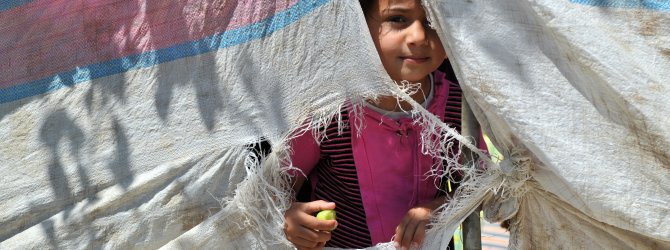-
2015: Humanity hit a record low in the WANA region
2015: Humanity hit a record low in the WANA region

In the Atlantic, Charles Kenny recently claimed that 2015 was the “best year in history for the average human being”. True, the world is “better-educated, better-fed, healthier, freer, and more tolerant”, but let’s not allow global aggregates feed complacency. How much does a better-fed global population average matter for the 16-year old Syrian boy who died of hunger in Madaya last week?
While a large part of the world is progressing, another seems to be slipping backwards. One cannot overlook the conflicts the WANA region has suffered from in 2015. Daesh ascended as the most radical security threat in the region’s modern history, using tactful social media techniques to recruit more young people and spreading terror like nothing the world has seen before. On the other hand, the Houthi movement in Yemen has developed an ambition and capacity to dominate the state. Taken together, hundreds of militias are challenging state authority and spurring internal animosity, from Libya to Syria, through Iraq, and all the way to Yemen. Some analysts were even positing that World War III could be knocking on the door. This rocks the entire region at its very foundations and the consequences for human life are clear.
No. This was not the best year for humanity, in fact, in WANA, humanity hit a record low in 2015. But we know all this already. It is not news. Something is different in the WANA region, and we need to understand what it is as well as its mechanisms.
The challenge for the WANA region is not dire poverty and conflicts per se, but rather, the protracted nature of this state of misery, and the consequent stress that this places on all aspects of life for the average WANA citizen, including safety and security, education, opportunity, and social cohesion. Civil wars not only cause death and suffering, but also shock economies, and have global spillover effects such as radicalisation, deteriorated health, and forced migration. The Syrian refugee crisis was the largest humanitarian disaster of 2015 and its effects were felt beyond the region’s borders. Hence, it is important to understand why the region is entrapped in intensifying conflicts. What are the conflict drivers in the region and what could be possible solutions? Essentially, there is a lack of regional resilience. We need to think about comprehensive solutions that will help the WANA region rise to stand by itself.
More importantly, the WANA region is not only facing existential challenges, but also longer term challenges such as climate change, urbanisation and environmental degradation – deficits that really bring the region’s environmental scarcities into perspective. WANA needs to invest new energy into finding solutions. We need to put our house in order, as on top of all of these existing challenges; kids dying out of hunger, uncontrollable conflicts, suffering economies, deteriorating health conditions, and the rise of armed non-state actors, new challenges are rapidly coming into play.
We are on the brink of what could be a new period in the history of WANA. Indeed, the region witnessed some positive events in 2015, such as the Iranian Nuclear Deal and the Tunisian National Dialogue Quartet finding a way forward and winning the Nobel Peace Prize. The Vienna process and the creation of the International Syria Support Group also raise small hopes for a political solution to the Syrian crisis. However, unless we invest in better understanding the complicated challenges of the region – inequality, unemployment, lack of opportunity, patronage, and rentierism - we will not be able to catch up with the rest of the world.
Ultimately, the WANA region is suffering from the absence of a regional security, economic, and political order to contain conflict. We want a WANA region that can manage intra-regional affairs on its own, get itself out of this spiral of protracted conflicts, and is ready to face longer term challenges. We are yet to see that.

